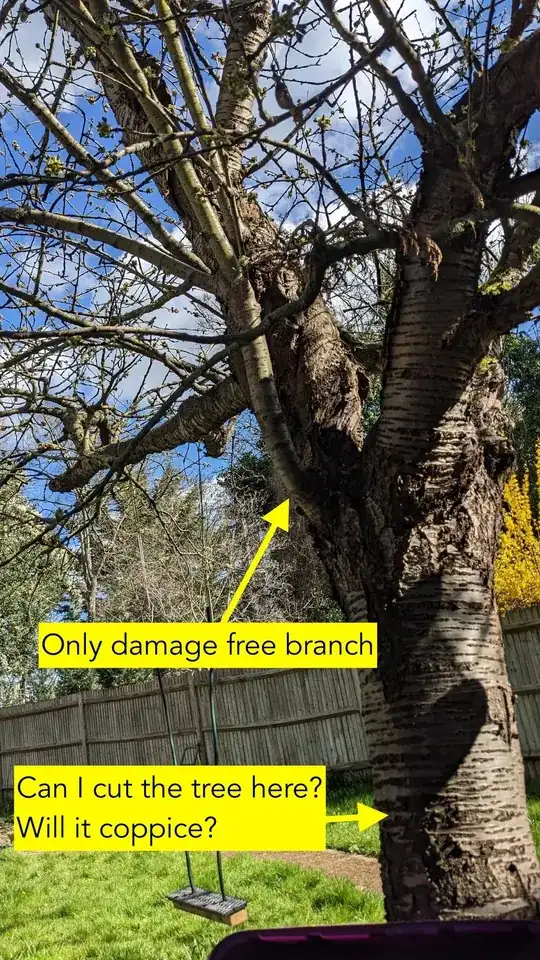I moved into a house with a large mature cherry tree. The tree seems to have been severely neglected. The bark is peeling off from most of the large branches, I can see boring insects have made holes in the wood, and the Y where the trunk splits had soil and moss and weeds growing (which I have removed).
The tree bears a good amount of slightly tart fruit. My original plan was to prune this tree over a few years. However, 4 out of the 5 older branches (the top of the Y) have bark splitting and wood borer holes in them. There's a small new branch which is damage free.
Ideally, I'd like to
- Improve the shape of the tree so it looks aesthetically pleasing.
- Lower the tree from it's 10m height so it's easier to pick fruit.
Is it possible to covert this tree into a coppiced form if I cut across the tree tree horizontally? If not, how would one go about restoring it's shape and removing damaged branches.
